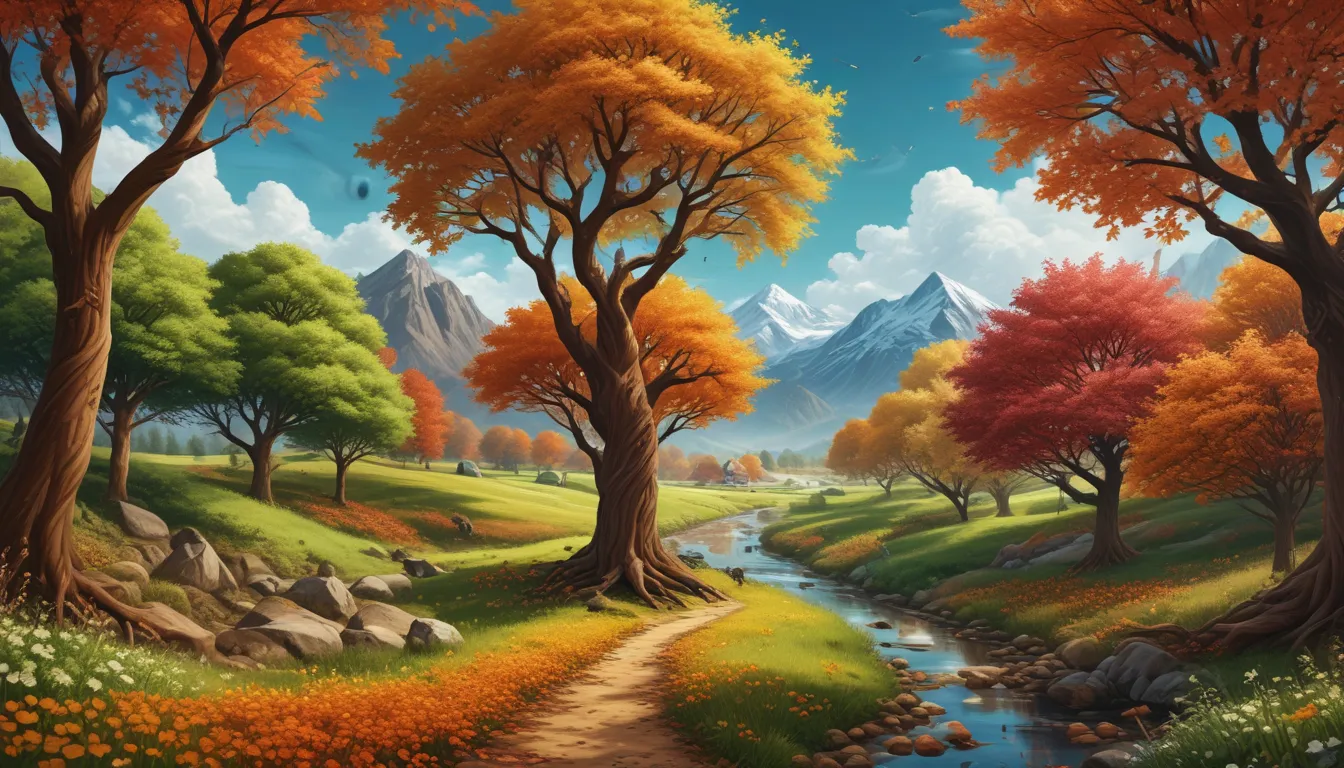The pictures we use in our articles might not show exactly what the words say. We choose these pictures to make you interested in reading more. The pictures work together with the words but don’t take their place. The words still tell you the important facts.
Seasons are a mesmerizing aspect of our planet's cycle of life, influencing everything from landscapes to animal behavior. Each season offers unique experiences and insights into the wonders of nature. In this article, we will delve into 20 intriguing facts about seasons, shedding light on the science behind the changing seasons and exploring their impact on our planet and our lives. Let's embark on a journey to discover the beauty and rhythm of the cyclical patterns that govern our world.
Key Takeaways:
- Seasons shape our world: Earth's tilt and orbit around the sun create different weather patterns, affecting plants, animals, and even our moods.
- Cultural significance: Seasons inspire art, literature, and celebrations worldwide, impacting farming, tourism, and health.
- Natural beauty: The changing seasons highlight the beauty and rhythm of life, reminding us of the dynamic and interconnected nature of our planet.
Understanding the Science Behind Seasons
The Earth’s Tilt: A Catalyst for Change
The transition of seasons, including winter, spring, summer, and autumn, is a result of the Earth's axial tilt as it orbits around the sun. This tilt creates varying levels of sunlight and weather patterns, giving rise to the unique characteristics of each season.
Astronomical vs. Meteorological Seasons
There are two types of seasons - astronomical and meteorological. Astronomical seasons are based on the Earth's position relative to the sun, while meteorological seasons are determined by temperature patterns and meteorological conditions.
Equinoxes and Solstices
The equinoxes mark the beginning of spring and autumn, with almost equal day and night durations globally. The solstices, on the other hand, signify the longest and shortest days of the year, impacting daylight hours significantly.
Impact on Wildlife
Seasonal changes influence wildlife behavior, including migratory patterns, hibernation, and breeding cycles. These adaptations are crucial for the survival of various animal species in different environments.
Cultural Celebrations and Festivals
Seasonal festivities are celebrated worldwide, each culture adding its unique flair to mark the transitions. From harvest festivals to religious ceremonies, seasons inspire diverse traditions and customs.
Exploring the Beauty of Seasons
The Changing Colors of Autumn
The vibrant hues of autumn foliage are a result of pigments like carotenoids and anthocyanins, revealed as chlorophyll in leaves breaks down. This transformation creates a spectacular display of colors in nature.
Seasonal Affective Disorder (SAD)
Some individuals experience seasonal changes in mood and energy levels, known as Seasonal Affective Disorder (SAD). The darker and colder months of winter can trigger symptoms of depression in susceptible individuals.
Inspiration in Art and Literature
The changing seasons have inspired countless works of art and literature, capturing the beauty and symbolism of nature's transitions. Artists and writers draw from the emotional depth and visual splendor of each season to create timeless pieces.
Impact on Human Health
Seasonal changes can impact human health, affecting conditions like allergies and respiratory illnesses. Changes in air quality and environmental conditions can exacerbate health issues during specific seasons.
Seasonal Adaptations in Animals
Some animals undergo physical adaptations, such as changing fur or plumage colors, to blend with seasonal shifts in their environment. This camouflage helps them survive and thrive in changing landscapes.
Embracing the Enchantment of Seasons
From the scientific marvel of axial tilts to the cultural festivities and health implications, the 20 facts about seasons paint a vivid picture of the dynamic forces at play in our world. The rhythmic dance of seasons reminds us of the ever-changing nature of life on Earth, inviting us to appreciate the intricate balance and diversity that seasons bring. So, let us pause and marvel at the wonders of each season, from the rejuvenation of spring to the cozy embrace of winter.
Conclusion
In conclusion, seasons are essential components of our planet's natural cycle, shaping landscapes, behaviors, and experiences. By understanding the facts about seasons, we can deepen our appreciation for the beauty and diversity of nature. Each season offers unique opportunities for exploration and connection with the world around us. Whether you revel in the warmth of summer or the tranquility of snow-covered winter, there is magic to be found in every season. So, take a moment to savor the marvels of the seasons and embrace the ever-changing tapestry of life.
FAQs
Q: How many seasons are there?
A: Typically, there are four seasons - spring, summer, autumn, and winter.
Q: Why do we have seasons?
A: Seasons occur due to the tilt of the Earth's axis as it orbits the sun, resulting in varying sunlight levels across the planet.
Q: How long do seasons last?
A: The duration of each season varies but generally lasts around three months.
Q: Do all regions experience the same seasons?
A: No, seasonal patterns vary depending on the hemisphere and latitude, leading to diverse climates worldwide.
Q: Are the lengths and characteristics of seasons changing?
A: Climate change can alter the lengths and characteristics of seasons, impacting temperature patterns and weather conditions.
Seasons are a constant reminder of the beauty and rhythm of life, offering insights into the interconnectedness of our world. Let us continue to explore, appreciate, and cherish the wonders of each season, embracing the ever-changing symphony of nature that surrounds us.






